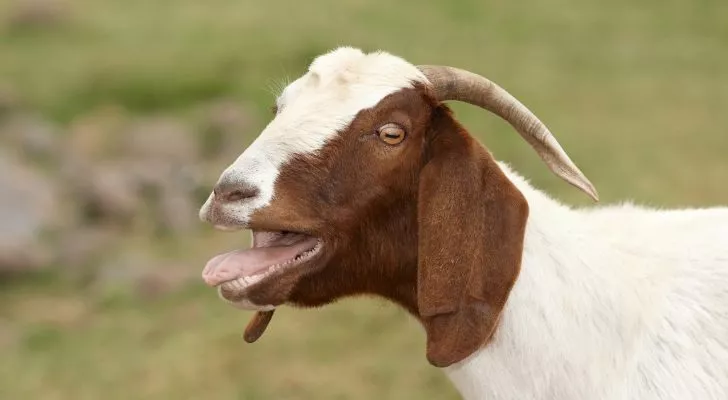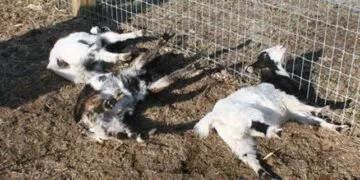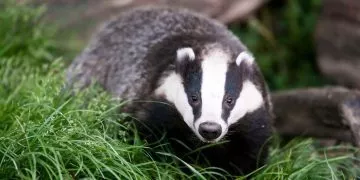Goats are fascinating creatures with stubborn yet cheeky personalities. They are one of the most popular animals in the world, and people breed them in all corners of the globe.
If you’ve stumbled on this page, you might be curious to learn more about these animals. As it turns out, there are plenty of fun facts to shout about!
Goats are related to sheep, but they have some striking differences. Goats are built a bit lighter, have shorter tails, and their horns arch backward.
A male goat is called a billy or a buck. This is where the name “billy goat” comes from. A female goat is called a nanny or a doe.
A baby goat is called a kid. Goats can give birth to twins, triplets, and even quadruplets!
It is thought that goats were first domesticated in the East during prehistoric times, around the same time humans started growing crops.
There are millions of domesticated goats worldwide today, most of which are in China, India, Pakistan, Bangladesh, and Nigeria.
For centuries, goats have been used as a source of food. People have enjoyed their meat, milk, and cheese for many years.
Goat leather is known for being strong, soft, and supple. It is used to make bags, jackets, and small leather goods such as wallets.
Goats were the first animals successfully raised to work and provide food sources and materials.
Christopher Columbus brought goats to the Americas in 1493. They arrived alongside horses, sheep, pigs, and other animals.
Just one or two goats could provide enough milk to feed a family for a year. One goat is capable of producing around 1-10 quarts (0.95-9.5 liters) of milk every day.
Cashmere goats, which originated from India‘s Kashmir region, produce cashmere wool in significant amounts for commercial purposes. This sought-after material is one of the warmest you can find.
Goat meat is the most popular meat in the world. It is eaten by a majority of the world’s population across almost all continents, including Africa and Asia.
Global goat meat exports are worth hundreds of millions of dollars annually. As of 2024, Australia, Ethiopia, and Kenya were the world’s top three exporters.
There are hundreds of different goat breeds. We’d love to tell you the exact number, but no one can agree on it! Some of the most popular breeds are Angora and Boer goats. Goat breeds have originated from many countries, including Somalia, Spain, and Hungary.
Miniature goats, such as the Nigerian Dwarf, are kept as pets. They can be excellent companions for children, elderly people, and others who are lonely. Miniature goats are also bred for small-scale milk production.
The North American mountain goat looks different from many other types of goat. This is because it is not a typical goat and is more closely related to the chamois.
Both male and female goats have horns. These are used to regulate their internal temperature and defend themselves against threats.
Goats bleat when they are impatient or trying to communicate with each other. This behavior can sometimes be depicted as goats “screaming.” You may have seen the popular screaming goat videos online!
Goats have horizontal pupils, which give them better vision and help protect them while grazing. The horizontal shape allows them to see predators approaching from all sides.
A goat represents the Zodiac sign Capricorn. People with this star sign are considered friendly and determined. They may have big dreams and ambitions.
The length of a female goat’s pregnancy is usually around 150 days. This may vary depending on factors like their breed or environment.
A faun is a half-man, half-goat creature that appears in ancient Roman and Greek mythology. They are often shown with pointed ears and are a symbol of peace and kindness.
Goats are remarkably similar to dogs. They can be trained to obey instructions, following many of the techniques used for dogs.
Both male and female goats can have beards, but nobody is sure of the exact reason why. Their beards may help to insulate them from cold weather or signal dominance when in a pack.
Goats do not have upper front teeth. Instead, they have a dental pad to protect their gums. They have lower teeth and some upper teeth further back in their mouths.

You can probably tell by now that goats are some of the most useful and interesting animals around.
They have fascinating histories, personalities, and characteristics that people worldwide are drawn to.
Armed with your new-found facts about goats, you will know more about them next time you spot one of these lively creatures at a farm, zoo, or even in the wild!


















